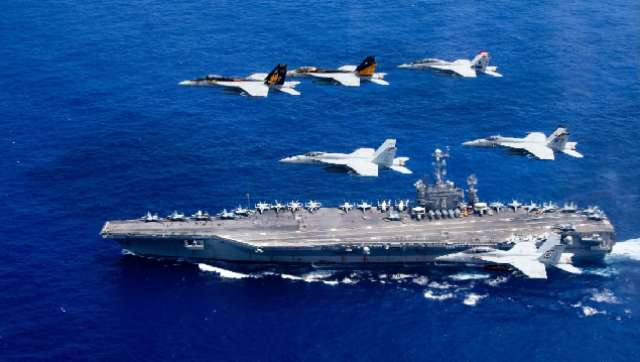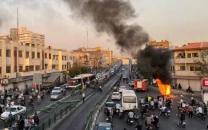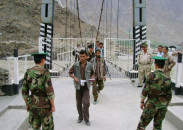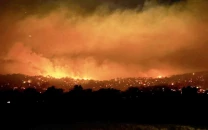US launches largest warship and here's what it means for Asia
This is what the $13 billion behemoth commissioned into the US Navy's fleet on Saturday means

A "100,000 tonne message has been sent to the world," says the President of United States.
The message has been delivered in the form of the aircraft carrier USS Gerald R Ford, a $13 billion leviathan which has been added into the US Navy's fleet on Saturday, CNN reports.
North Korea’s nuclear conundrum and Asian security
"Wherever this vessel cuts through the horizons, our allies will rest easy and our enemies will shake with fear because everyone will know that America is coming and America is coming strong," Trump said.
The deployment has officially not been announced yet as the US military toils to stay ahead of their game in an increasingly tense North Asia.
China has recently launched its second aircraft carrier which is also being dubbed as the most advanced destroyer ever. North Korea joined the bandwagon and has tested its first intercontinental ballistic missile, one that theoretically puts Alaska in range of Pyongyang's military reach and has Hawaii readying missile defence drills.
The military state of play in Asia has been tense for quite some time and as the US observes the increase of power from different settings, it aims to place larger numbers of technologically advanced weapons in the Pacific.
CNN reports Admiral Harry Harris, commander of more than 340,000 US troops in the Pacific, saying that the US Pacific Command "is prepared to fight tonight with the best technology of any force on the planet."
The US has 11 active aircraft carriers and more in production. In comparison, China just launched its second aircraft carrier, but that ship won't be ready for action for a few years.
The US is also positioning some of its newest weaponry in Asia, highlighted by the arrival of Marine Corps F-35B fighters in Japan and Terminal High-Altitude Area Defence, or THAAD, missile batteries in South Korea.
Trump says North Korea's Kim is 'a pretty smart cookie'
While those new additions to the region may be making headlines, the US has maintained a solid force at bases from Japan to Australia.
Kadena Air Base on the Japanese island of Okinawa is home to the US Air Force's 18th Wing. More than 50 F-15 Eagle fighters are based at Kadena, supported by tankers and AWACS command and control aircraft.
In South Korea, the US maintains two major air bases, Osan with F-16 fighters and A-10 "tank killers," and Kunsan with F-16s.
North Korea's isolationism is making it suffer technologically, however, that in no way means it can't do catastrophic damage to its enemies.
South Korea fields some of the world's most-advanced weaponry, all focused on protecting it from the threat posed by the North.
"They make a competitive case to be the Pacific region's leading modern multi-role heavy surface combatant, while providing an important platform for new South Korean weapons," wrote the Defence Industry Daily of Sejong the Great destroyer, which are even bigger than US guided-missile cruisers.
Japan has assembled one of the world's strongest and technologically advanced militaries, analysts say. "Pilot for pilot, ship for ship, Japan can stand toe to toe with anybody," said John T Kuehn, a professor of military history at the US Army Command and General Staff College.
China brags the world's largest military with more 2.1 million active duty personnel. In the air, too, China can field large numbers of combat assets, including more than 800 fighter jets and 150 bombers.
This article originally appeared on CNN.



















COMMENTS
Comments are moderated and generally will be posted if they are on-topic and not abusive.
For more information, please see our Comments FAQ